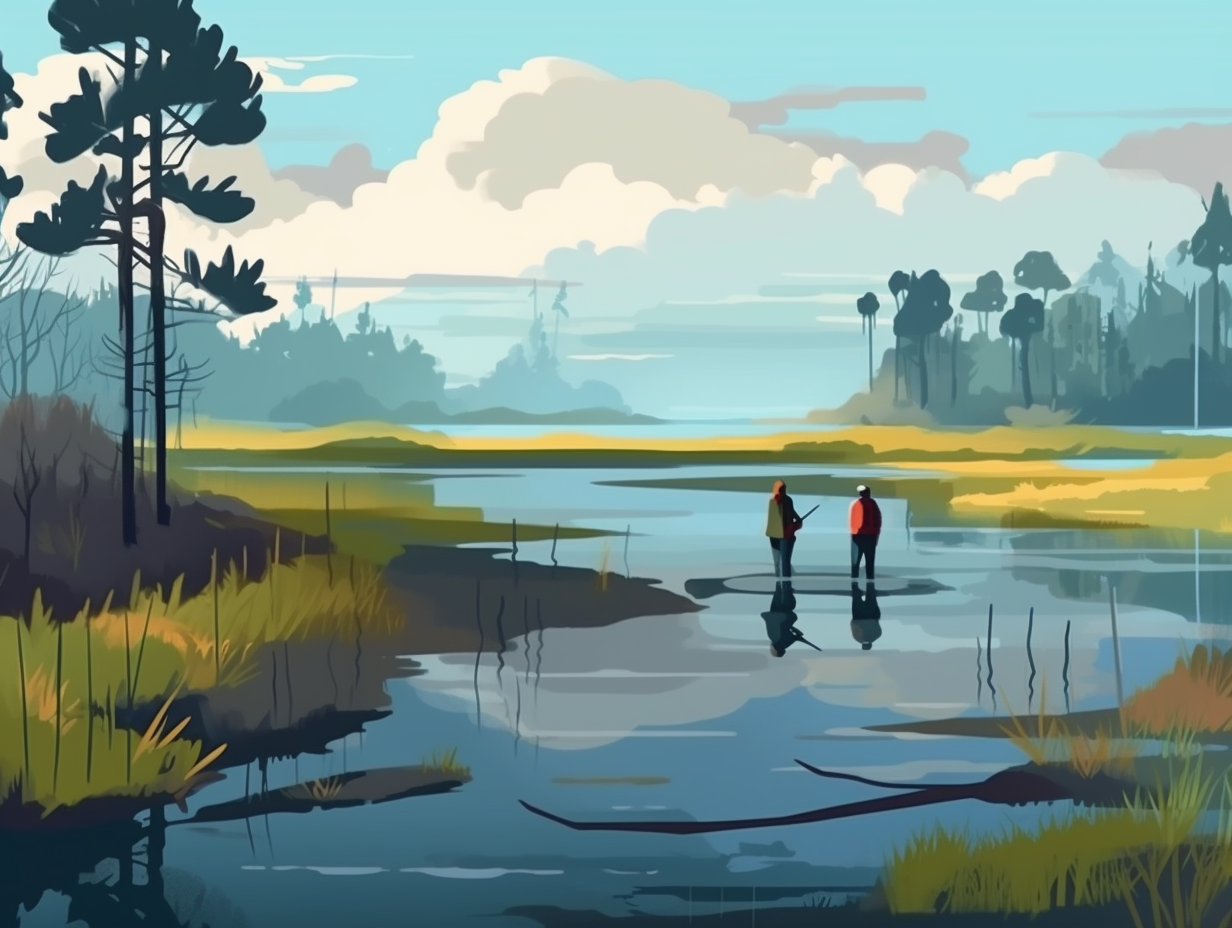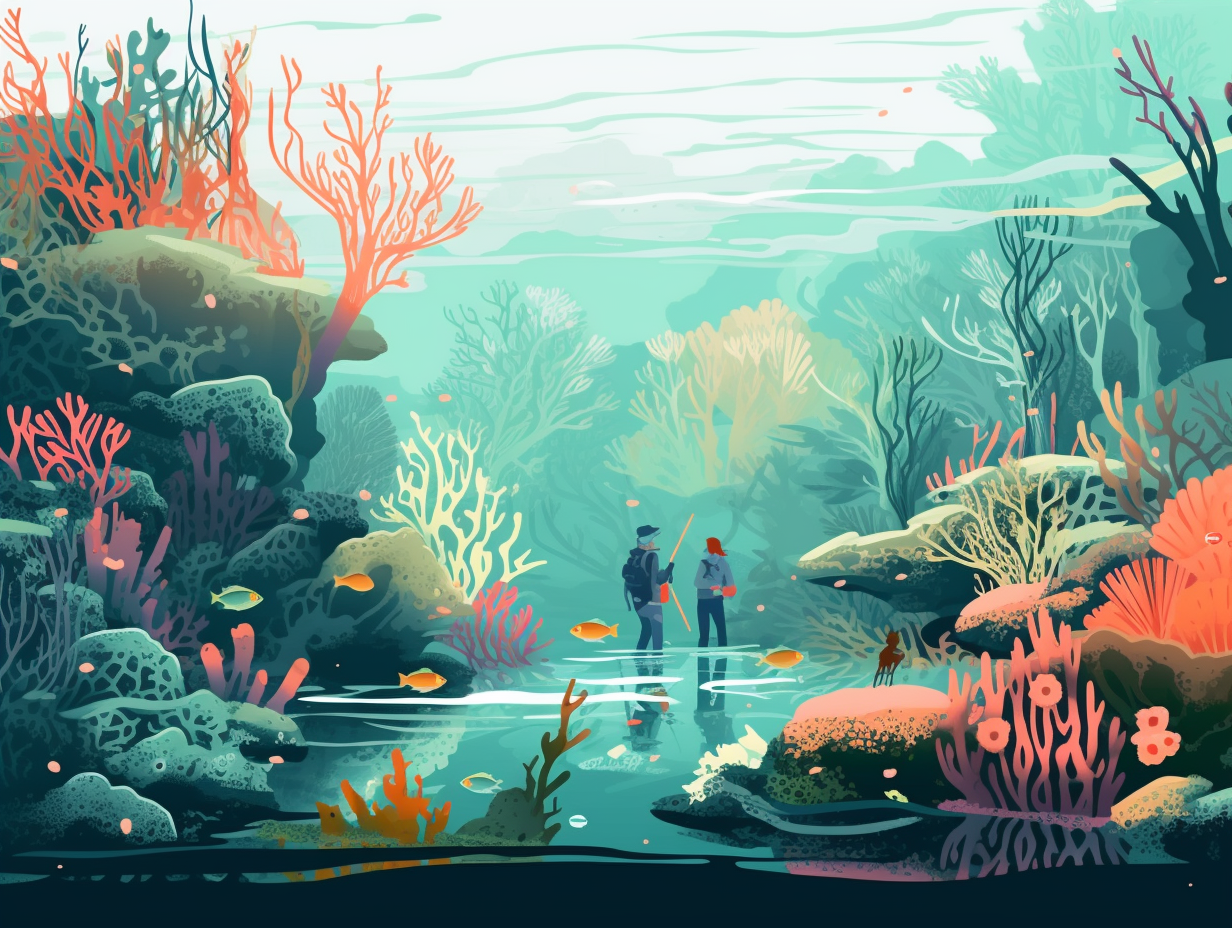Discover the Wonders: Top 12 Fun Facts About Salt Marshes You Never Knew

1. Party Central for Microorganisms
As the exclusive clubs for gourmet microorganisms and tiny critters galore, salt marshes are where the ocean's smallest inhabitants party like it's 1999: These coastal hotspots provide a feast of organic fare and enticing detritus, ensuring the thriving existence of countless micro and macro invertebrates, like seafood stars crustaceans, mollusks, and worms.
Source => link.springer.com
2. Eco-Friendly Supermodels of Water Purification
Never underestimate the multitasking powers of a marsh! With its aroma that can wake the dead and foliage that's greener than a green-eyed monster, salt marshes have been dominating the coastal catwalk long before Mother Nature decided to venture into the world of water purification: The organic fashionistas of our wetlands, salt marsh plants such as Saltmarsh Cordgrass, employ their root systems in a process called phytoremediation, which traps and removes excess nutrients and pollutants from the water, giving salt marshes a hidden talent for cleaning and filtering water like the eco-friendly supermodels they are.
Source => wmap.blogs.delaware.gov

Did you know the Everglades is actually a massive national park with nine habitats, including beautiful marshes? Discover more intriguing marsh facts! 🌱🌾
=> Fun Facts about Marshes
3. All-You-Can-Eat Buffets for Marine Life
Hold on to your shrimps and cocktail sauce: salt marshes are basically the all-you-can-eat buffets for fish and shellfish, playing a crucial role in the productivity and health of marine food chains in our coastal ecosystems!
Source => americanoceans.org
4. Carbon-Shaming Superheroes
Who knew that salt marshes, the soggy coastal home of countless squawking seagulls and the occasional reckless swimmer, were such overachieving green fanatics? Turns out, they're the superheroes of carbon-shaming: Salt marshes excel at capturing and storing carbon dioxide thanks to the oxygen-free environment of their soil, which, in turn, decelerates the decomposition of plants and ensures that carbon stays buried for centuries – even millennia. With their unfathomable powers of carbon sequestration, these coastal wetlands valiantly fight climate change and laugh in the face of rising tides.
Source => oceanservice.noaa.gov

5. Oceanic Kindergarten and Brita Filter Combo
While salt marshes might sound like the birthplace of Poseidon's sneezes, they're actually like oceanic kindergartens and eco-friendly Brita filters rolled into one: Salt marshes provide protection against coastal erosion and flooding, serve as crucial habitats for marine species like fish and shellfish, and also filter runoff to improve water quality.
Source => phys.org
6. BFFs with Nitrogen-Fixing Bacteria
Whoever said you can't make friends with salad clearly never met salt marsh diazotrophs: These nitrogen-fixing bacteria and archaea cozy up to salt marsh plant roots, helping create one of the most productive ecosystems on Earth and playing a vital role in the global nitrogen cycle.
Source => frontiersin.org
7. Nature's Bouncers for Coastal Erosion
Salt marshes: nature's bouncers for the coast's rowdiest tidal parties, keeping unruly waves in check and throwing them back into the ocean with a splash of sediment finesse! In all seriousness: Salt marshes are vital ecosystems offering protection to coastal areas by stabilizing sediment and reducing the impacts of incoming waves, while also improving water quality and providing habitat for wildlife, though they face challenges from climate change, pollution, and invasive species.
Source => sciencedirect.com
8. Carbon-Storing Sheriff Showdown
Step aside, tropical rainforests – there's a new carbon-storing sheriff in town, and it's feeling a little salty! Salt marshes: these often-underestimated ecosystems not only act as essential habitats, but also put rainforests to shame by storing up to five times more carbon per unit area.
Source => frontiersin.org
9. Productivity Masters Under Threat
Ever wonder who's having a productive day when we're not? Perhaps it's the salt marshes of the world, working harder than a beaver at an underwater woodworking convention! Niftily enough: these ecosystems act as carbon-capturing aficionados and nutrient cycling specialists. However, human activities and climate change have caused a global reduction of salt marshes, losing over half of them. Tides further act as landscape artists, curating the plant communities and nutrient distribution in these essential wetlands.
Source => onlinelibrary.wiley.com

10. Marsh Party with Macrophyte Stars
Did you hear about the party at the salt marsh? It was a "swamp and awe" affair, with macrophytes as the unexpected stars of the show: These marsh-dwelling plants play a crucial role in trapping and directing sediment deposition, impacting the marsh's elevation and overall health. But beware rapid sea level rising – if it outpaces the macrophytes' growth, the marsh could end up drowning, turning into a mudflat!
Source => besjournals.onlinelibrary.wiley.com
11. Essential Undersea Seafood Bistros
Salt marshes are the take-out joints of the sea, where marine life swings by and grabs some grub: In fact, a whopping 80% of economically important finfish and shellfish species depend on this prime undersea bistro. Unfortunately, humans have turned into party poopers by destroying these aquatic dining establishments and thus causing a significant decline in our favorite seafood cuisine and stressing the entire fishery system. So, let's not be oceanic buzzkills and protect these natural gastronomical watering holes!
Source => blogs.ifas.ufl.edu
12. Unsung Superheroes of Coastal Protection
Holy coastal savior, Batman! It turns out salt marshes are the unsung superheroes of waterfront property protection: these marshy marvels can reduce storm-related damage by up to 20%, making them crucial allies in maintaining our communities and economy.
Source => pewtrusts.org
Related Fun Facts




















